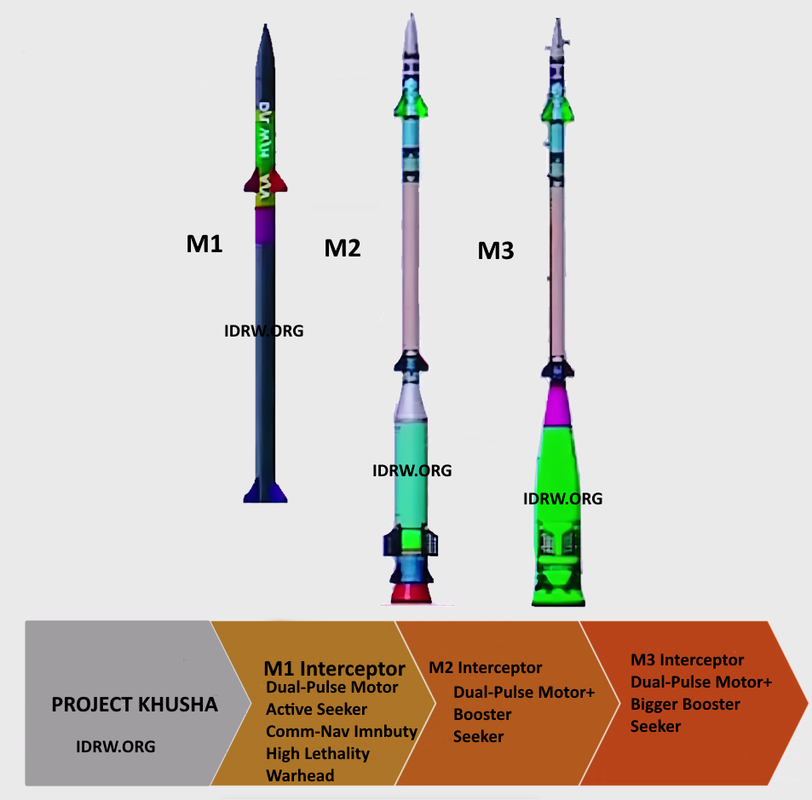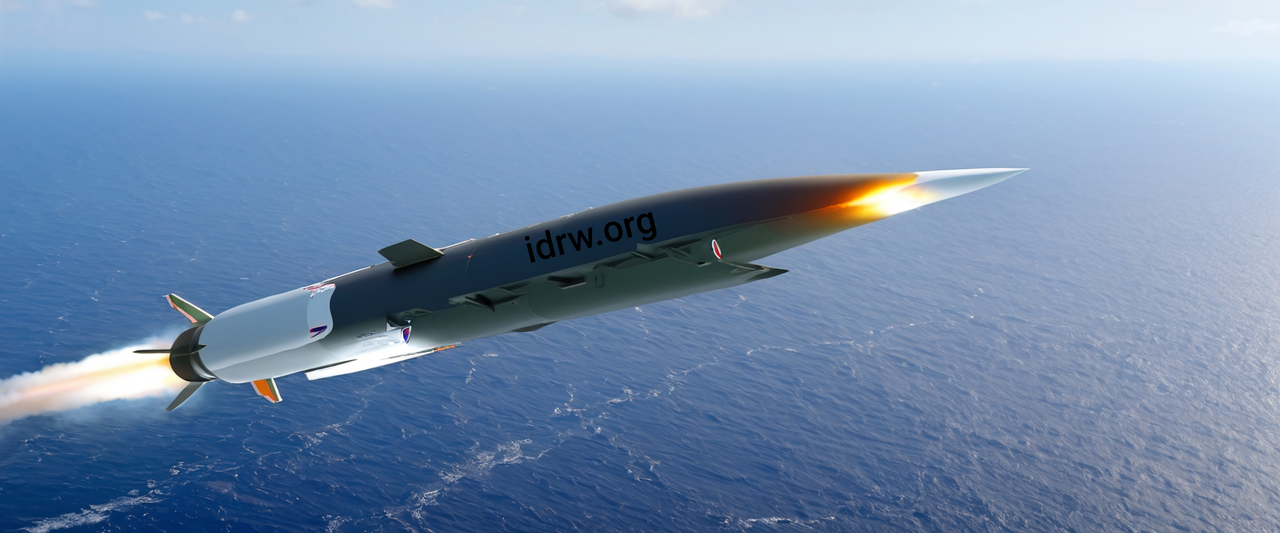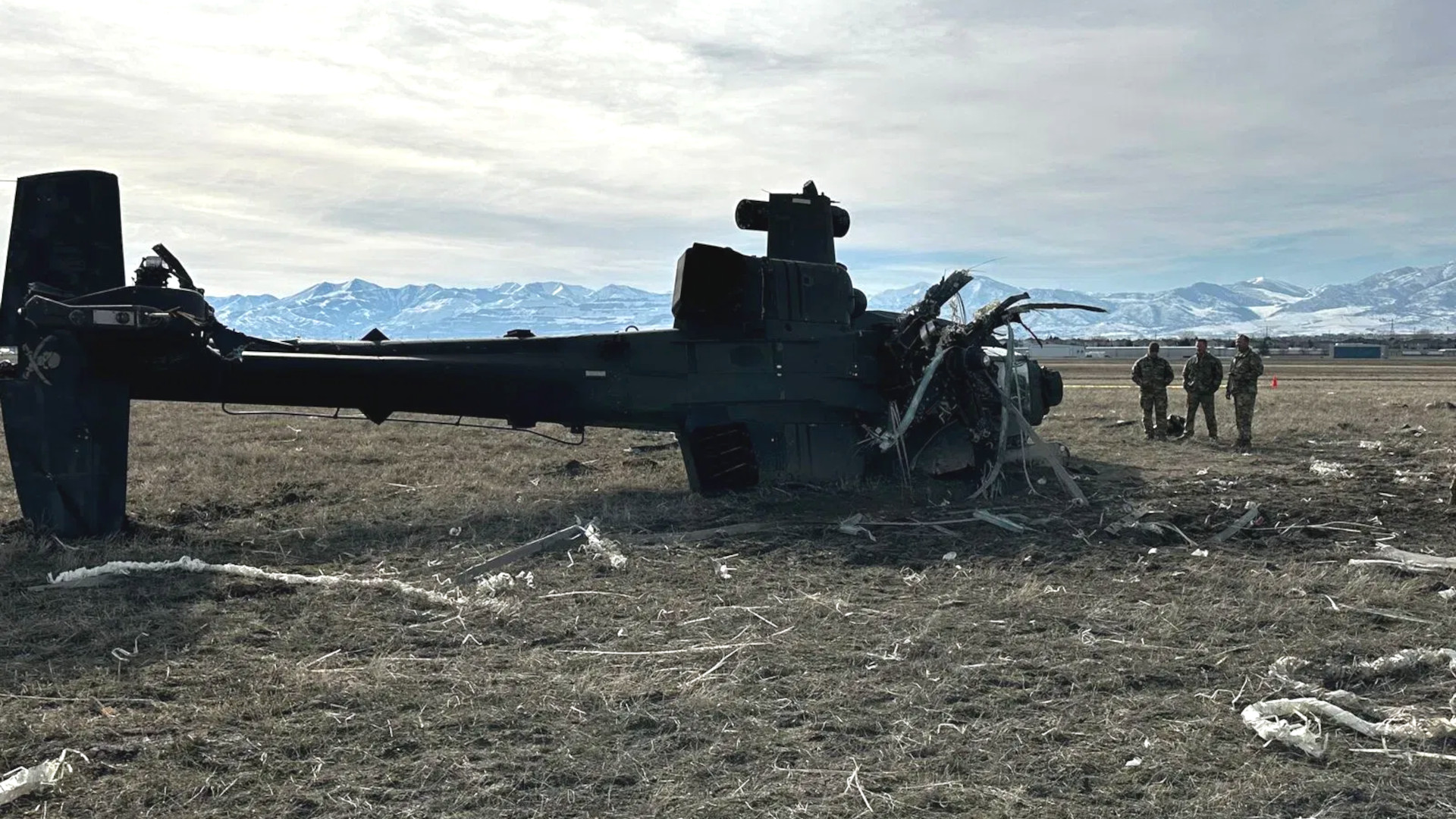SOURCE: IDRW.ORG TEAM

The Indian Air Force (IAF) is actively working to integrate a wide range of indigenous weapon systems onto its Sukhoi-30MKI fleet. The Defence Research and Development Organisation (DRDO) has developed 16-18 weapon systems that are currently undergoing integration processes.
A key player in this endeavor is the IAF’s Software Development Institute. The institute is responsible for ensuring seamless communication between the various sensors onboard the Sukhoi-30MKI, including its Mission Computer (MC) system, and the newly developed weapon systems. This integration is crucial for the successful operation of these weapons and their effective utilization in combat scenarios.
Continue readingSOURCE: RAUNAK KUNDE / NEWS BEAT / IDRW.ORG

India’s Defence Research and Development Organisation (DRDO) has shed light on the much-anticipated Project Kusha, a multi-layered air defense system designed to safeguard the country’s airspace from a wide range of aerial threats. Recent images obtained by idrw.org reveal crucial details about the three interceptor missiles being developed under this project: M1, M2, and M3.
Project Kusha employs a tiered approach to air defense. Each interceptor missile caters to a specific range and target type, ensuring comprehensive protection against enemy aircraft, cruise missiles, and even airborne early warning and control systems (AWACS) and aerial refuelers.
Continue readingSOURCE: RAUNAK KUNDE / NEWS BEAT / IDRW.ORG

The National Aerospace Laboratories (NAL) has issued a Request for Proposal (RFP) for a collaboration aimed at developing a cutting-edge 150kg loitering munition (LM-UAV). This initiative is part of NAL’s efforts to advance indigenous aerospace technologies and enhance India’s defence capabilities.
NAL’s new project involves the development of 10 prototypes of the 150kg loitering munition UAV, a versatile and high-performance system designed for precision strike and surveillance missions. The project has an estimated cost of ?102 crore, with NAL contributing ?64 crore towards the development. The UAV will be powered by a 30hp Wankel engine developed by NAL and will feature a state-of-the-art Electro-Optical/Infrared (EO/IR) sensor gimbal and a 200km line-of-sight (LOS) communications link.
Continue readingSOURCE: RAUNAK KUNDE / NEWS BEAT / IDRW.ORG

India’s ambitious plan to acquire 31 MQ-9B Sky Guardian drones, commonly known as Predator drones, for nearly $3 billion, has recently seen a significant shift. Initially, there were discussions about integrating Indian-made weapon systems such as the air-launched Helina Anti-Tank Guided Missile (ATGM) and the UAV Launched Precision Guided Missile (ULPGM). However, due to the high costs associated with integration and certification, these plans have been deferred, at least for now.
The Indian Army and Air Force were both keen on equipping the MQ-9B drones with Indigenous weapons, which would have bolstered India’s defence self-reliance. However, the costs involved in integrating and certifying these Indian-made systems on the Predator drones were found to be prohibitively high. This includes the costs associated with adapting the drones’ existing architecture to accommodate new weapons and ensuring that these systems meet stringent operational standards.
Continue readingSOURCE: IDRW.ORG TEAM

India has officially commissioned the INS Arighat, the second nuclear-powered ballistic missile submarine (SSBN) in its class, following the lead of its predecessor, INS Arihant. Bearing the pennant number S3, INS Arighat represents a significant leap forward in the capabilities of India’s strategic submarine fleet. It is reportedly at least a decade ahead of INS Arihant in terms of technological advancements, thanks to a series of major upgrades to its internal systems that remain classified.
The INS Arighat is powered by an 83 MW pressurized water reactor (PWR), which has been further optimized and refined to enhance its performance and efficiency. The improvements in the reactor not only increase the submarine’s operational endurance but also reduce its acoustic signature, making it harder to detect by enemy sonar systems. Additionally, the sonar and electronic systems on board have received substantial upgrades, providing INS Arighat with improved detection capabilities and situational awareness, crucial for modern underwater warfare.
Continue readingSOURCE: IDRW.ORG TEAM

The Indian Ocean Region (IOR) has become a focal point of growing geopolitical competition, with China’s increasing presence raising concerns for India. This article explores this complex issue, examining recent developments and potential future scenarios.
The deployment of Chinese research vessels in the IOR has become a frequent occurrence. These vessels, while ostensibly engaged in scientific research, are suspected by some of conducting activities that could have military applications. The graphic accompanying this article illustrates the paths taken by these vessels during their recent surveys, highlighting the extent of their operations.
Continue readingSOURCE: RAUNAK KUNDE / NEWS BEAT / IDRW.ORG

The BrahMos Aerospace, the Indo-Russian joint venture behind the world’s only supersonic cruise missile, is gearing up for its next technological leap. The company is now focused on developing a near-hypersonic variant of the BrahMos missile, aiming to push its speed to an unprecedented Mach 5.
Currently cruising at Mach 3, the BrahMos is already a formidable weapon. However, the corporation believes that a further speed boost will render it virtually impossible to intercept by modern air defence systems. To achieve this, BrahMos is working on an improved ramjet engine capable of propelling the missile to near-hypersonic speeds.
Continue readingSOURCE: RAUNAK KUNDE / NEWS BEAT / IDRW.ORG

India and Malaysia have agreed to strengthen their military collaboration, with a particular focus on the maintenance and upgrade of the Royal Malaysian Air Force (RMAF) operated Su-30MKM fighter fleet. Under the proposed agreement, the RMAF’s Su-30MKM fleet could be overhauled and upgraded with Indian-made systems. This cooperation would not only benefit both countries but also strengthen their strategic partnership in the region.
In addition to the Su-30MKM upgrades, both countries are exploring other areas of cooperation in the maintenance of Russian-origin fighter jets. The RMAF has expressed interest in acquiring the BrahMos-A air-launched cruise missile, a joint Indo-Russian venture.
Continue readingSOURCE: RAUNAK KUNDE / NEWS BEAT / IDRW.ORG

A major milestone has been achieved in India’s defence manufacturing sector with the upcoming activation of the final assembly line (FAL) for the ‘Make in India’ C295 program. After receiving approval from the Directorate General of Aeronautical Quality Assurance (DGAQA) earlier this year, Tata Advanced Systems Limited (TASL) is poised to begin producing detailed parts and sub-assemblies for the C295 aircraft in India.
The factory in Vadodara, Gujarat, is expected to go operational by the end of November or early December. Construction on the facility began in October 2022, and the company anticipates producing up to eight C295s annually.
Continue readingSOURCE: IDRW.ORG TEAM

Artemon Aerospace, a Pune-based startup, is making significant strides in the development of loitering munitions. The company has entered the flight testing phase for multiple variants of its loitering munition, aiming to fine-tune the systems through rigorous multi-stage evaluations.
Both hand-launched and canister-launched versions of the loitering munition are undergoing flight tests, ensuring their optimal performance and reliability. Artemon Aerospace is also exploring the potential of multi-configuration launch systems in collaboration with iDEX – DIO and the Indian Navy.
Continue readingSOURCE: IDRW.ORG TEAM

A significant milestone has been reached in India’s defense sector as the Defence Research and Development Organisation (DRDO) and Adani Defence successfully completed trials of the 1000 Kg Gaurav Glide Bomb.
During the tests, the Gaurav glide bomb demonstrated its impressive capabilities by accurately hitting a target located more than 100 kilometers away. This successful outcome paves the way for the commencement of limited serial production of the glide bomb.
Continue readingSOURCE: RAUNAK KUNDE / NEWS BEAT / IDRW.ORG

The Defence Research and Development Organisation (DRDO) is gearing up to revisit its long-standing ambition of developing a long-range supersonic cruise missile. This development comes as a potential complement or replacement to the existing BrahMos cruise missile system.
A concept for such a missile was initially unveiled by DRDO in 2010. This prototype boasted an impressive Mach 3.2 speed and a range exceeding 600 kilometres. A standout feature was its unique airframe-integrated air intakes, drawing inspiration from the air intakes of the iconic MiG-25 fighter jet.
Continue readingSOURCE: RAUNAK KUNDE / NEWS BEAT / IDRW.ORG

The arrival of the highly anticipated Boeing AH-64E Apache attack helicopters for the Indian Army has been delayed due to recent crashes involving the platform in the US Army. According to a source close to idrw.org, investigations into these crashes have identified potential issues with the AH-64E, specifically an increase in electrical power generator failures. These failures could lead to a dangerous build-up of smoke in the cockpit, posing a significant risk to pilots.
In response, Boeing has placed a hold on all new deliveries of the AH-64E Apache attack helicopter. This hold will remain in effect until the underlying issues are fully addressed and validated through additional testing.
Continue readingSOURCE: RAUNAK KUNDE / NEWS BEAT / IDRW.ORG

Amidst the ongoing conflict in Ukraine, Russia has extended an offer to India to replace Ukrainian-made gas turbine engines (GTE) on its warships with its own M90FR model. The move comes at a critical juncture for the Indian Navy, which heavily relies on Ukrainian engines for its fleet.
The M90FR, developed by United Engine Corporation (UEC), boasts a maximum capacity of 27,500 horsepower and is touted as a superior alternative to the older Ukrainian engines, which date back to the 1960s and 1970s. According to Russian officials, the new engine offers better fuel efficiency, longer overhaul intervals, and advanced control systems. Furthermore, Russia has expressed its willingness to establish local production of these engines in India.
Continue readingSOURCE: IDRW.ORG TEAM

In a significant demonstration of technological prowess, the Indian Air Force (IAF)’s Software Development Institute has successfully developed the program for the Software-Defined Radio (SDR) for the LCA-Tejas fighter jet at zero cost, outperforming a Defense Public Sector Undertaking (DPSU) that had quoted a staggering 290 crores for the same task.
Air Vice Marshal KN Santosh, Commandant of the IAF’s Software Development Institute, revealed this achievement during an interview with Bharat-shakti. The institute, co-located with the Aircraft and Systems Testing Establishment (ASTE), has played a pivotal role in the development of advanced software solutions for the IAF.
Continue reading